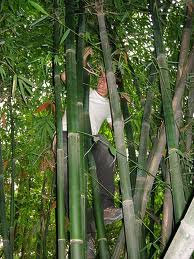The Philippine forests were once among the richest in the world, in terms of density and diversity of tree species, decades back.
However, due to deforestation through ‘kaingin’ and illegal logging the forest resource base has dwindled at an alarming rate, adversely affecting the supply of forest indigenous raw materials to various industries, especially the handicrafts and furniture sectors.
To save the handicrafts and furniture industry from declining, the Department of Science and Technology’s Forest Products and Research and Development Institute (DOST-FPRIDI) is looking for new sources of new materials.
Among these new sources according to scientist, Dr. Ramiro P. Escobin from Anatomy and Forest-Botany Section of the DOST-FPRIDI, are climbing bamboos and forest vines.
Climbing bamboos are potential alternative to rattan and conventional wood. Traditionally, they were only tapped for low-end uses but now climbing bamboos have been utilized into bands of elegant ladies’ bags and furniture components.
Forest vines also, are among the least studied plant groups despite their promising use as wall decors, trays, vases and other handicrafts items for export. This commodity can be an added source of income especially the rural and forest dwellers.
Basic information on how to maximize the use of forest vine has been compiled at (DOST-FPRIDI’s) and use for further research.
The institute is also directing ample research efforts to other new materials, such as industrial plantation species, fiber plants that can be fashioned into high value handbags, mats and hats; water hyacinth, that clogs many of the rivers and lakes but can also be utilized and turned them into varied handicrafts.
The FPRDI is also studying the processing, preservation and drying aspects of these materials to make them pest resistant, appealing and useful. “Our furniture and handicraft industries are experiencing extreme shortage of raw materials and alternative solution must be sought in order for these industries to survive” Escobin said.
